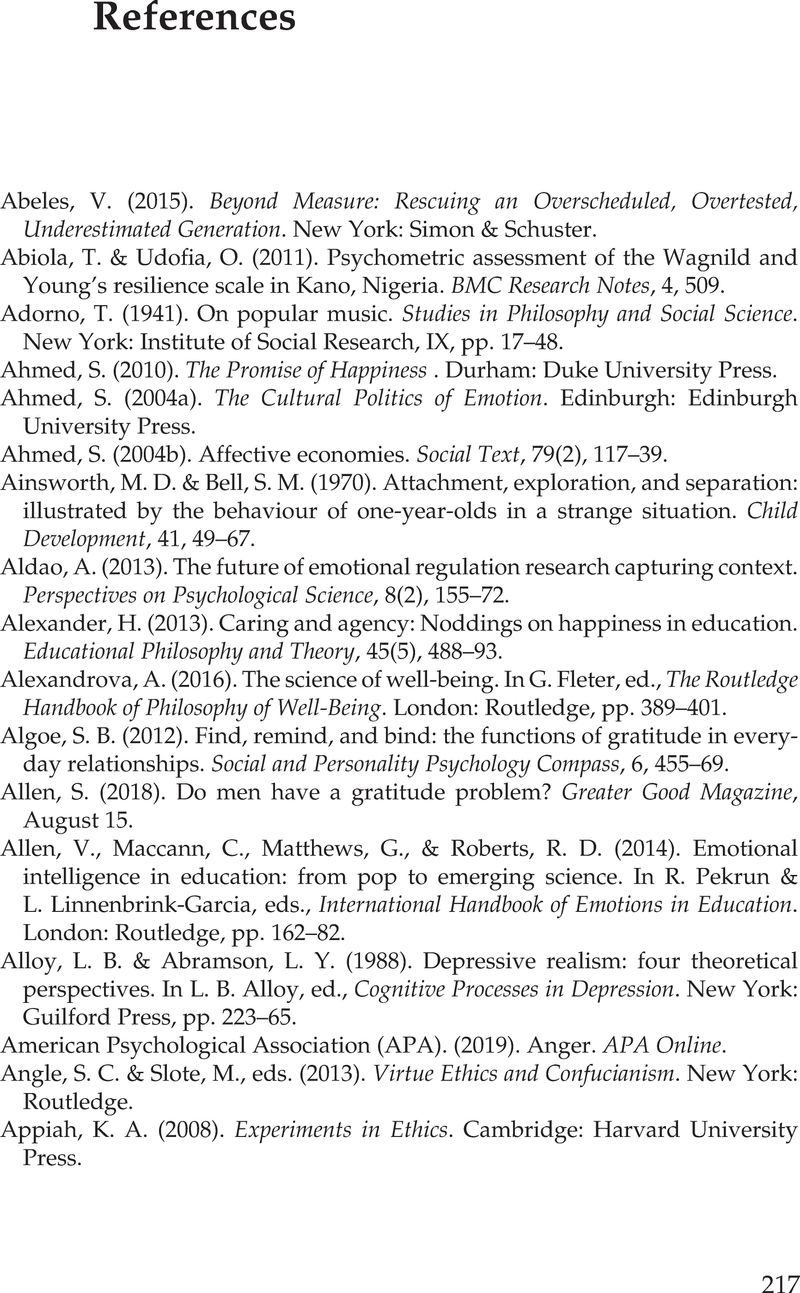Book contents
- Beyond Virtue
- Studies in Emotion and Social Interaction
- Beyond Virtue
- Copyright page
- Contents
- Foreword
- Acknowledgements
- Chapter 1 Introduction
- Chapter 2 Psychology and the Politics of Educating Emotions
- Chapter 3 Views of Emotions in Moral Philosophy
- Chapter 4 Happiness, Eudemonia, and Well-Being
- Chapter 5 Caring, Compassion, and Altruism
- Chapter 6 Gratitude
- Chapter 7 Resilience and Mindfulness
- Chapter 8 Vulnerability, Courage, and Grit
- Chapter 9 Anger
- Chapter 10 Sadness, Fear, and Anxiety
- Chapter 11 Conclusion
- References
- Index
- Studies in Emotion and Social Interaction
- References
References
Published online by Cambridge University Press: 23 October 2020
- Beyond Virtue
- Studies in Emotion and Social Interaction
- Beyond Virtue
- Copyright page
- Contents
- Foreword
- Acknowledgements
- Chapter 1 Introduction
- Chapter 2 Psychology and the Politics of Educating Emotions
- Chapter 3 Views of Emotions in Moral Philosophy
- Chapter 4 Happiness, Eudemonia, and Well-Being
- Chapter 5 Caring, Compassion, and Altruism
- Chapter 6 Gratitude
- Chapter 7 Resilience and Mindfulness
- Chapter 8 Vulnerability, Courage, and Grit
- Chapter 9 Anger
- Chapter 10 Sadness, Fear, and Anxiety
- Chapter 11 Conclusion
- References
- Index
- Studies in Emotion and Social Interaction
- References
Summary

Information
- Type
- Chapter
- Information
- Beyond VirtueThe Politics of Educating Emotions, pp. 217 - 243Publisher: Cambridge University PressPrint publication year: 2020
